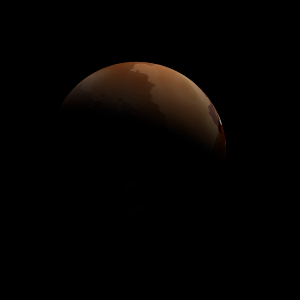|
|
Space Astro
|
Info for exoplanet "Juba-nyunyu"
| Scientific (actual) data |
|---|
| Name | Kepler-1668 b |
| Planet status | Confirmed |
| Radius | 0.388 |
| Orbital period | 15.434 |
| Semi major axis | 0.124 |
| Inclination | 88.24 |
| Discovered | 2020 |
| Updated | 2021-02-05 |
| Tzero tr | 2455200 |
| Impact parameter | 0.7137 |
| Temperature (kelvin) | 721 |
| Publication | Announced on a website |
| Detection type | Primary Transit |
| Alternate names | 2MASS J19492455+4605453 b, K01470.01, KIC 9480310 b, KOI-1470 b, KOI-1470.01 |
| Star name | Kepler-1668 |
| Right ascension | 297.35° |
| Declination | 46.1° |
| Mag i | 15.461 |
| Mag j | 14.492 |
| Mag h | 14.101 |
| Mag k | 14.013 |
| Star distance | 1386.19 |
| Star metallicity | 0.07 |
| Star mass | 1.065 |
| Star radius | 1.05 |
| Star temperature | 5328.33 |
| Star alternate names | 9480310, 2MASS J19492455+4605453, KIC 9480310, KOI-1470 |
| Wikipedia article | Kepler-1668 b |
Back
| |
| Fictional info (?) |
|---|
| Suggested name | Juba-nyunyu |
| Planet type | Terrestrial |
| Having almost no atmosphere to retain heat, it has surface temperatures that vary diurnally more than on any other planet in its solar system, ranging from 115°K (-158°C) at night to 980°K (707°C) during the day across the equatorial regions.
The oxygen has probably photodissociated, and the free methane has been swept into interplanetary space by the solar wind because of the lack of a planetary magnetic field.
The largest moon is populated by strange stone-age oceanic creatures called the "Gyahyo". They feed scattered in groups by seeking smaller pray if it is available. Most Gyahyo are related to the Pyarabya but have fur and vary in size from 50 to 80 cm. The Gyahyo can thrive at temperatures from 50 to 140°C but are killed by intense weather which is common on Juba-nyunyu. |
| Estimated population | 600000000 |
| Atmosphere | Methane | 64% |
| Carbon dioxide | 27% |
| Oxygen | 8% |
| Water | 0.19% |
| Atmospheric pressure | 26 bar |
 |
| Moon | Komigeryu'ake | Medium-sized irregular oceanic planetoid |
| Google search for Juba-nyunyu |
|
Website by Joachim Michaelis
|
|
|
|